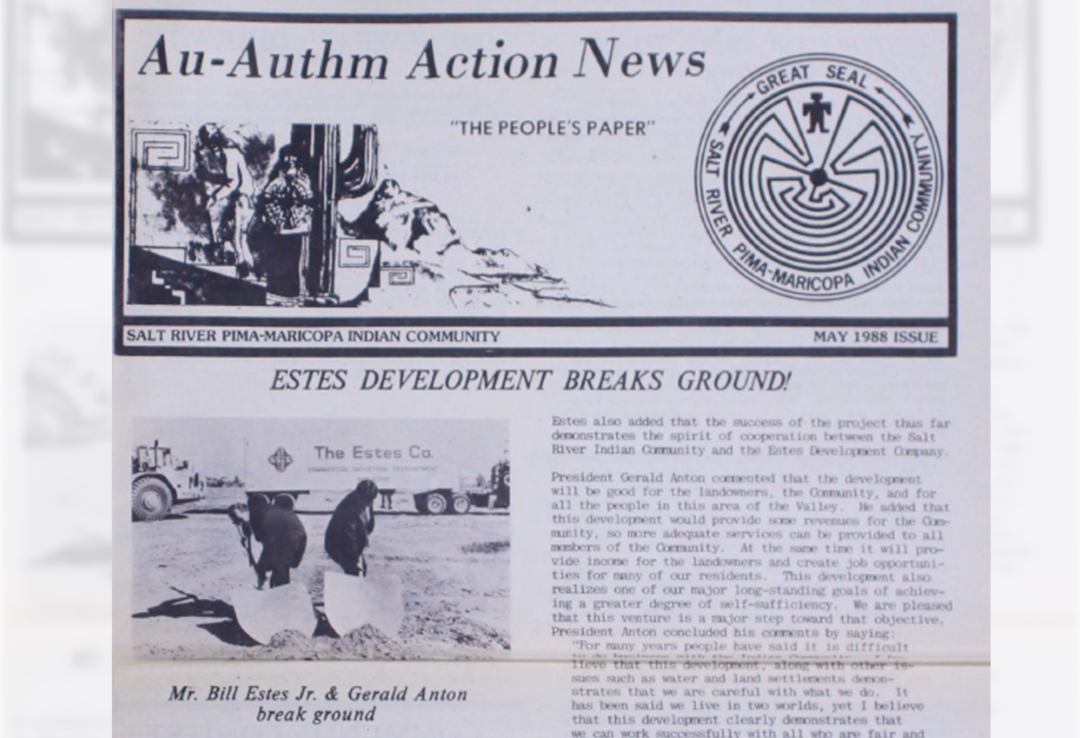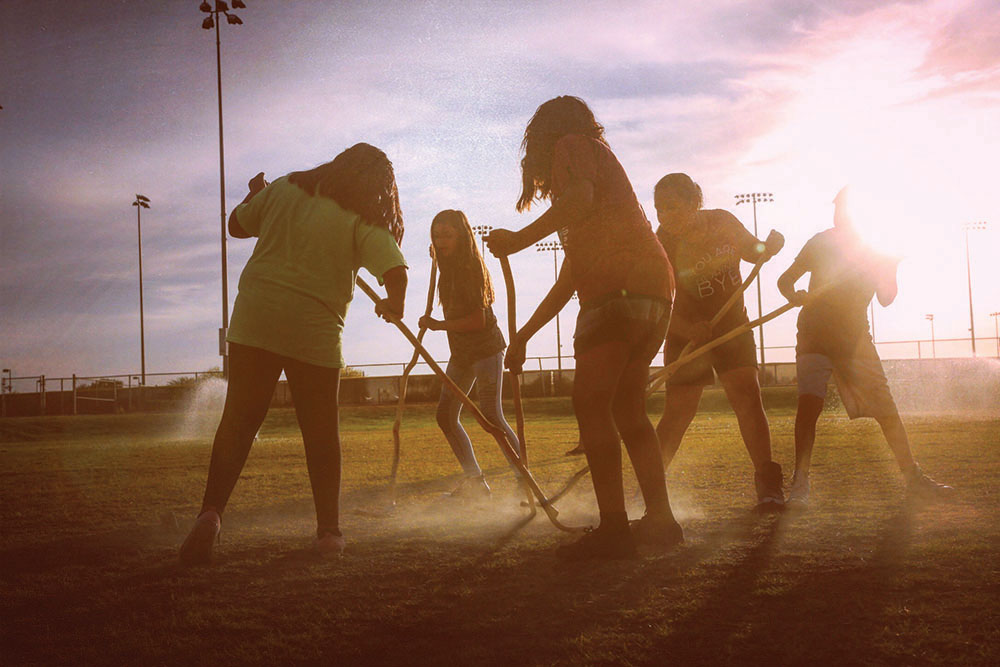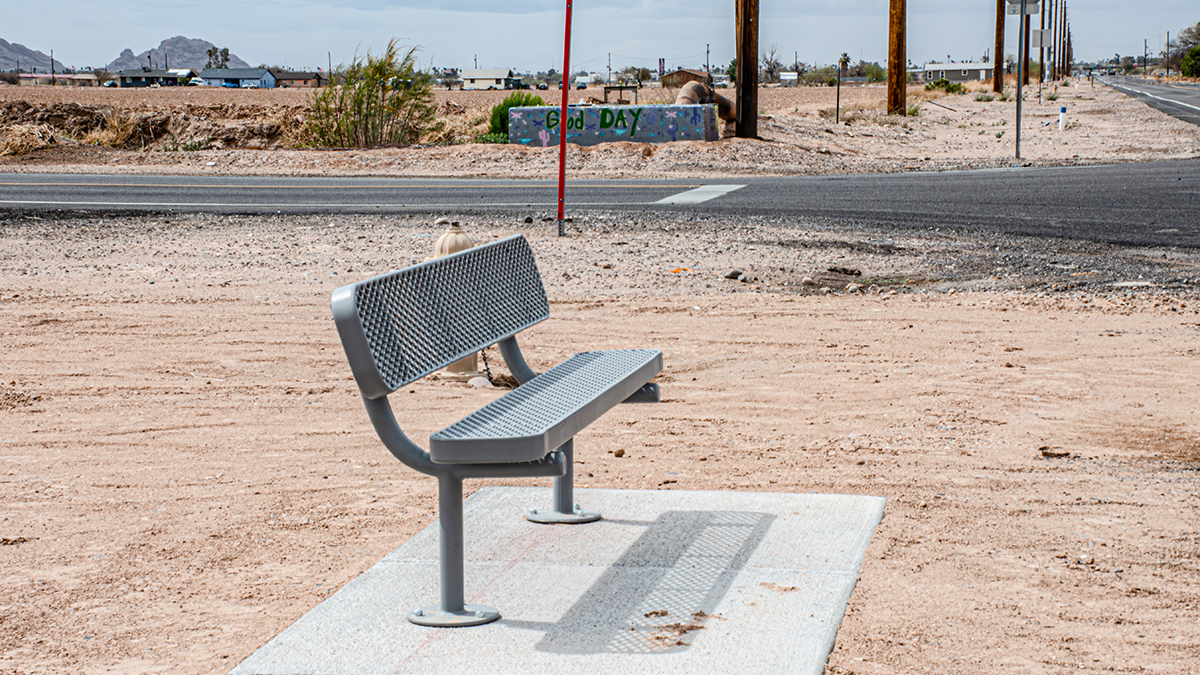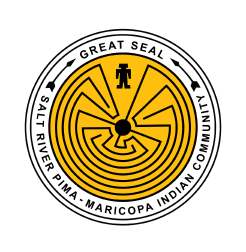VIEWS: 2715
April 22, 2025The History Behind the Pavilions at Talking Stick
Earlier this year, O’odham Action News reported on the joint venture between the Salt River Pima-Maricopa Indian Community and De Rito Partners, Pavilions SRPMIC De Rito JV, LLC, to acquire the Pavilions at Talking Stick shopping center, located within the Talking Stick Entertainment District.
The SRPMIC felt that the financial returns of the investment were positive and closed on the transaction on January 16, allowing for the Community to control the future of the Pavilions, which was the first retail power center to be built in Indian Country.
From the original planning phase – to the opening of the Pavilions – to the many events since then, there are stories within stories to tell.
Let’s take a deep dive into the modern history of the land, landowners and the people involved in the construction and operation of the Pavilions at Talking Stick.
A ground-breaking feat
Planning for the development of the Pavilions began in January 1986 with the Vestar Development Company. A ground lease was established in July 1987, and approvals were obtained in February 1988.
The Pavilions were built in two phases from 1989 to 1991.
If you’re too young to know, or if you might recall, this is around the time when Fountain Hills was incorporated, and the annual Ostrich Festival began in Chandler. The starting lineup during the Phoenix Suns’ 1988-1989 playoff run was Chambers, Corbin, Hornacek, Johnson and West.
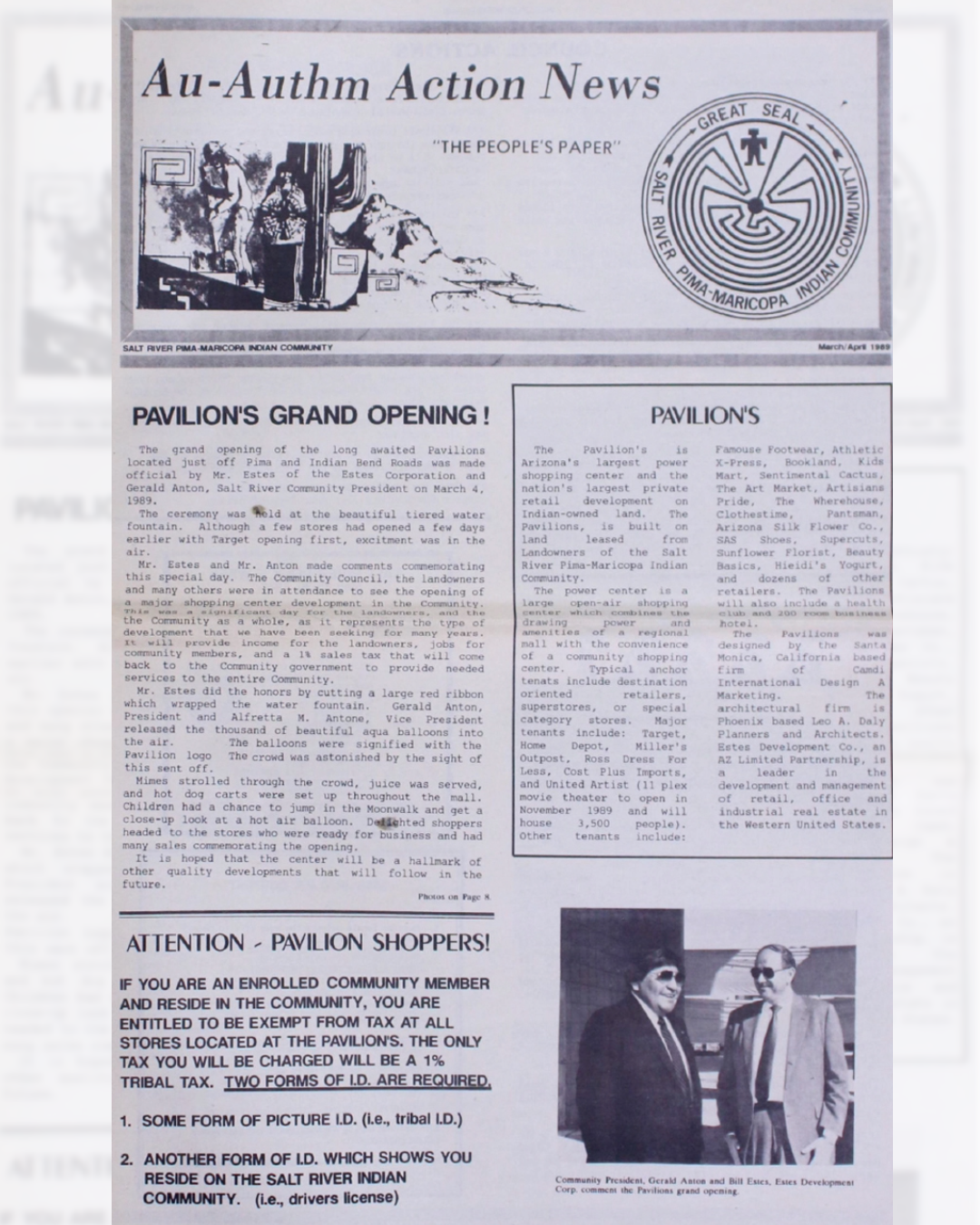

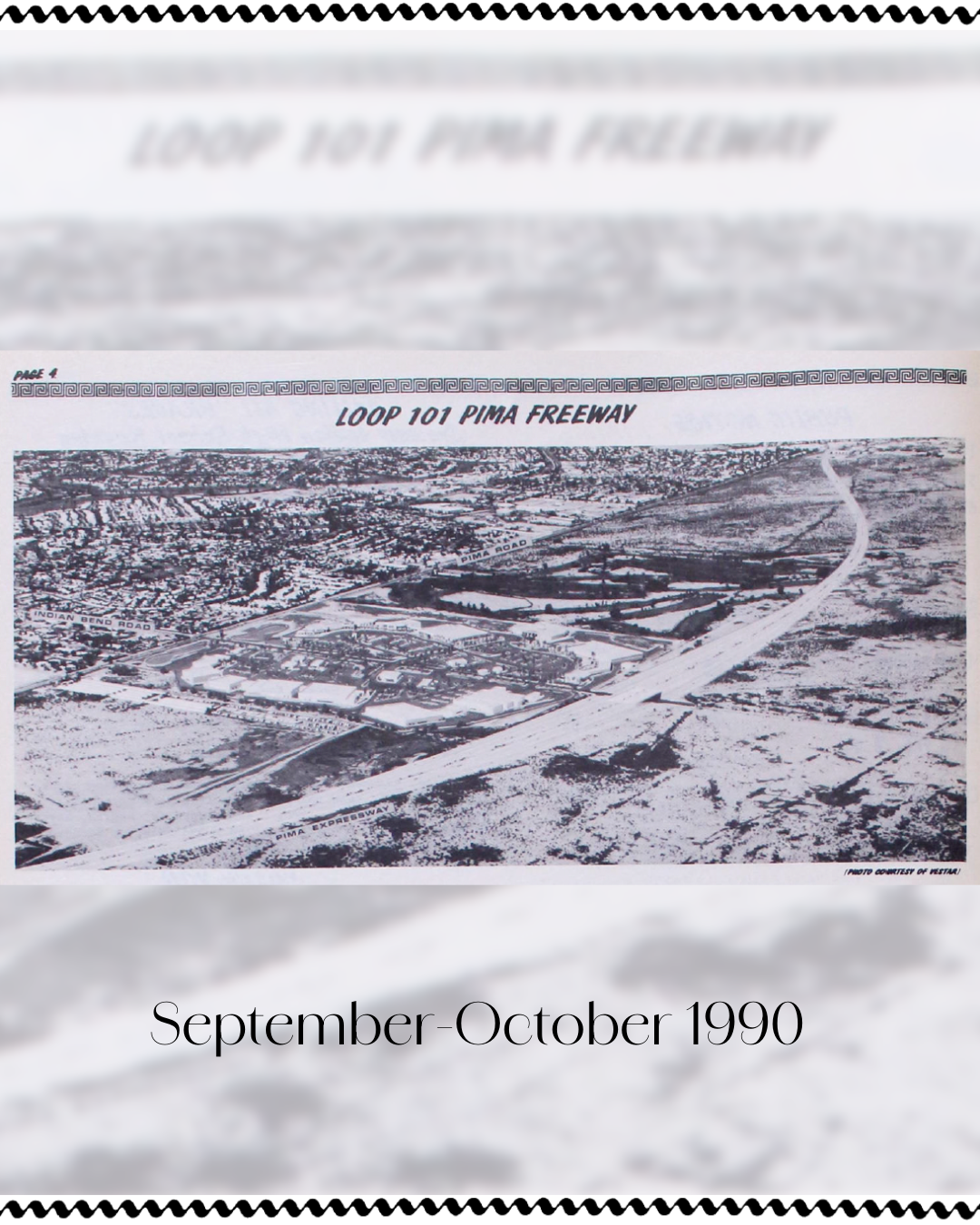

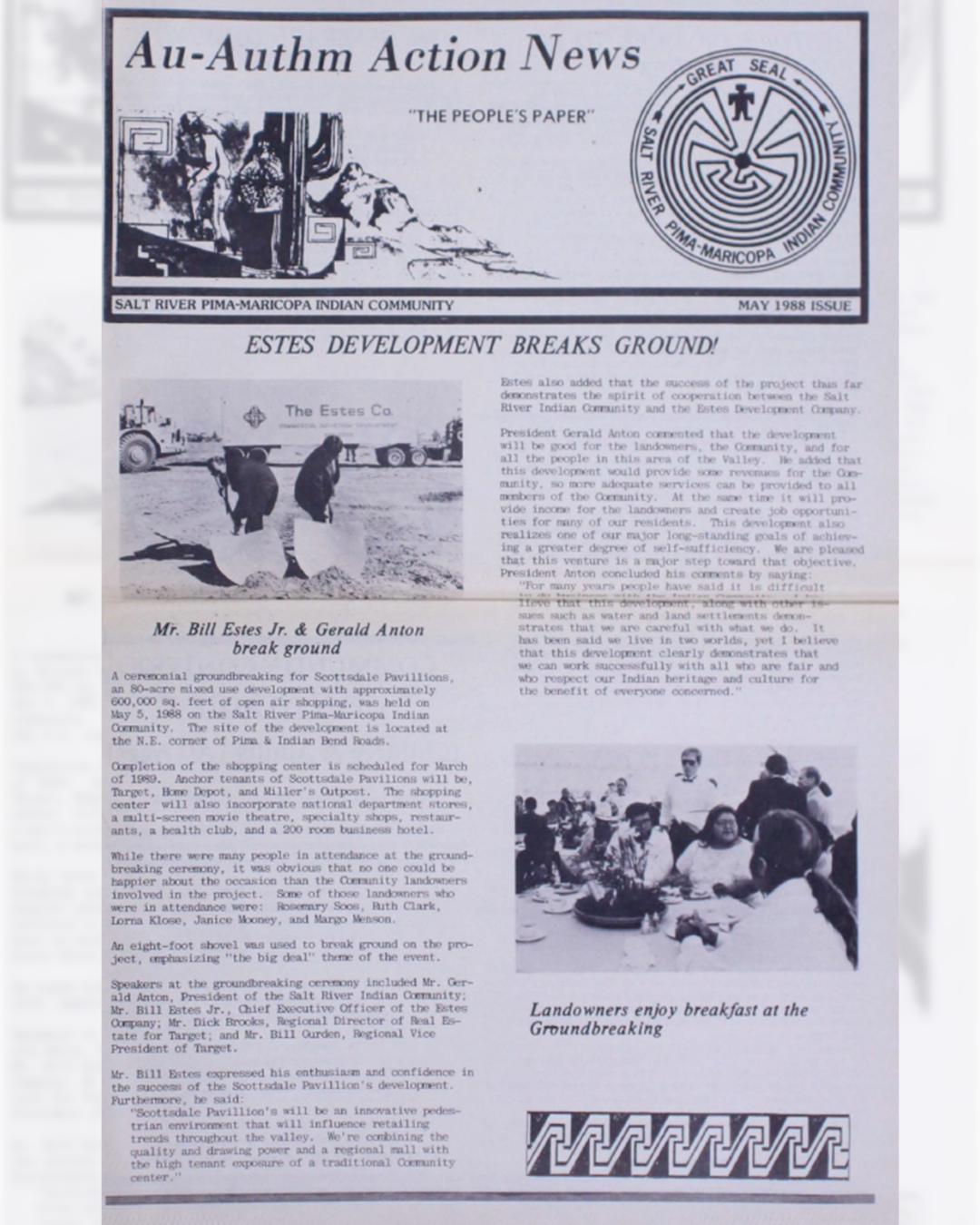
Until 1989, Vestar operated as the commercial and industrial development division of the Estes Company, a diversified builder and developer. In 1989, senior management of the division, in conjunction with a Midwest-based pension fund, led a buyout of the division, resulting in the company Vestar.
The design architect for the Pavilions were Camdi International Design and Marketing in Montreal, Canada, and the executive architect of the project was Leo A. Daly Architects and Planners.
According to a project reference file released by the Urban Land Institute in 1994, the Pavilions project was initiated at the instigation of two of Vestar’s retail clients, Target and Home Depot, who were interested in entering the Scottsdale market.
With a Council action in March 1988, SRPMIC President Gerald Anton executed the commitment letter to Target to allow them to locate to the Community.
The two companies remain anchor stores of the Pavilions to this day.
The ceremonial groundbreaking for the Pavilions was held on May 5, 1988. On the way to the ceremony with your FM radio dial turned up, you might have heard the number one song on the music charts that day, “Wishing Well” by Terence Trent D’Arby.
At the groundbreaking, Anton and Estes Company CEO Bill Estes, along with Dick Brooks, regional director of real estate for Target and Bill Gurden, regional vice president of Target, all said a few words about the development.
“…it has been said we live in two worlds, yet I believe that this development clearly demonstrates that we can work successfully with all who are fair and who respect our Indian heritage and culture for the benefit of everyone concerned,” said Anton, at the event.
Estes expressed his enthusiasm and confidence in the future success of the development.
“[The Pavilions] will be an innovative pedestrian environment that will influence retailing trends throughout the valley. We’re combining the quality and drawing power [of a] regional mall with the high tenant exposure of a traditional Community center.”
Estes and Anton broke ground using two over-sized 8-foot shovels, emphasizing the “big deal” theme of the event.
Some of the landowners in attendance for the groundbreaking included Rosemary Soos, Ruth Clark, Lorna Menson Klose, Janice Mooney and Margo Menson.

The grand opening
The grand opening ceremony was held at a “beautiful, tiered water fountain” on March 4, 1989, according to an article in the March/April 1989 issue of O’odham Action News. At this moment in time the editor of O’odham Action News was Mary M. Andrews.
The unnamed author explained, “This was a significant day for the landowners, and the Community as a whole, as it represents the type of development that we have been seeking for many years.”
A large red ribbon was wrapped around the fountain, and Estes cut the ribbon. President Anton and Vice-President Alfretta M. Antone released thousands of aqua-colored balloons with the Pavilions logo into the air. The crowd was astonished by the sight of the send-off.
Estes posed for a photo with Anton and Antone as they held up t-shirts with the Pavilions logo on it. Miss Salt River Davonna Gates also graced the crowd with her royal presence.
The festivities included mimes strolling through the crowd and a large bounce house for kids called the Moonwalk. The stores had been open for business for a few days before the grand opening, so attendees also shopped at the Pavilions’ businesses. There was even a grand opening drawing to win a trip to Hawai’i.
A big deal for landowners
It was a big deal then, and 37 years later it’s still a big deal to the original landowners, their families, Community members and the region’s consumers.
Salt River Pima-Maricopa Indian Community member Hans Klose said in a recent interview that his mother Lorna (daughter of Lawrence Menson) was a landowner spokesperson who, along with tribal attorney Richard Wilks and President Anton, worked with developer lead Ralph Horlacher to execute the original Pavilions lease.
“Lawrence, Robert, and Ruth Menson were the only children of original allottee Luther Menson to survive to adulthood with three other children dying during the 1918 influenza epidemic,” Klose told O’odham Action News in February. “By the time the Pavilions was conceived, Lawrence and Robert had passed, and Ruth was not overly interested in organizing the families representing the landownership of the site, so my mom took the lead.”
Lorna’s two sisters Janice Menson Mooney (1949-2023) and Margo Menson (1956-2019) were also original landowners.
“My brother Lawrence Klose (1973-2024) […] was a landowner after he inherited half of my mom’s interest.,” said Klose. His “Uncle” Herman Emerson Lopez is still a living landowner within the south Pavilions leasehold.
At the time of development of the site, the allotted land parcels were owned individually by 47 Native Americans. Klose estimates that due to fractionation, the total number of landowners within the Pavilions land area is about 100.
Fractionation refers to the increasing division of ownership in allotted lands as they are inherited across generations.
The Pavilions lease is unitized, meaning it is a combination of two or more leases for joint development. Regardless of what is built where within each lease, landowners share the rents paid for that lease based on their overall ownership interest in the lease.

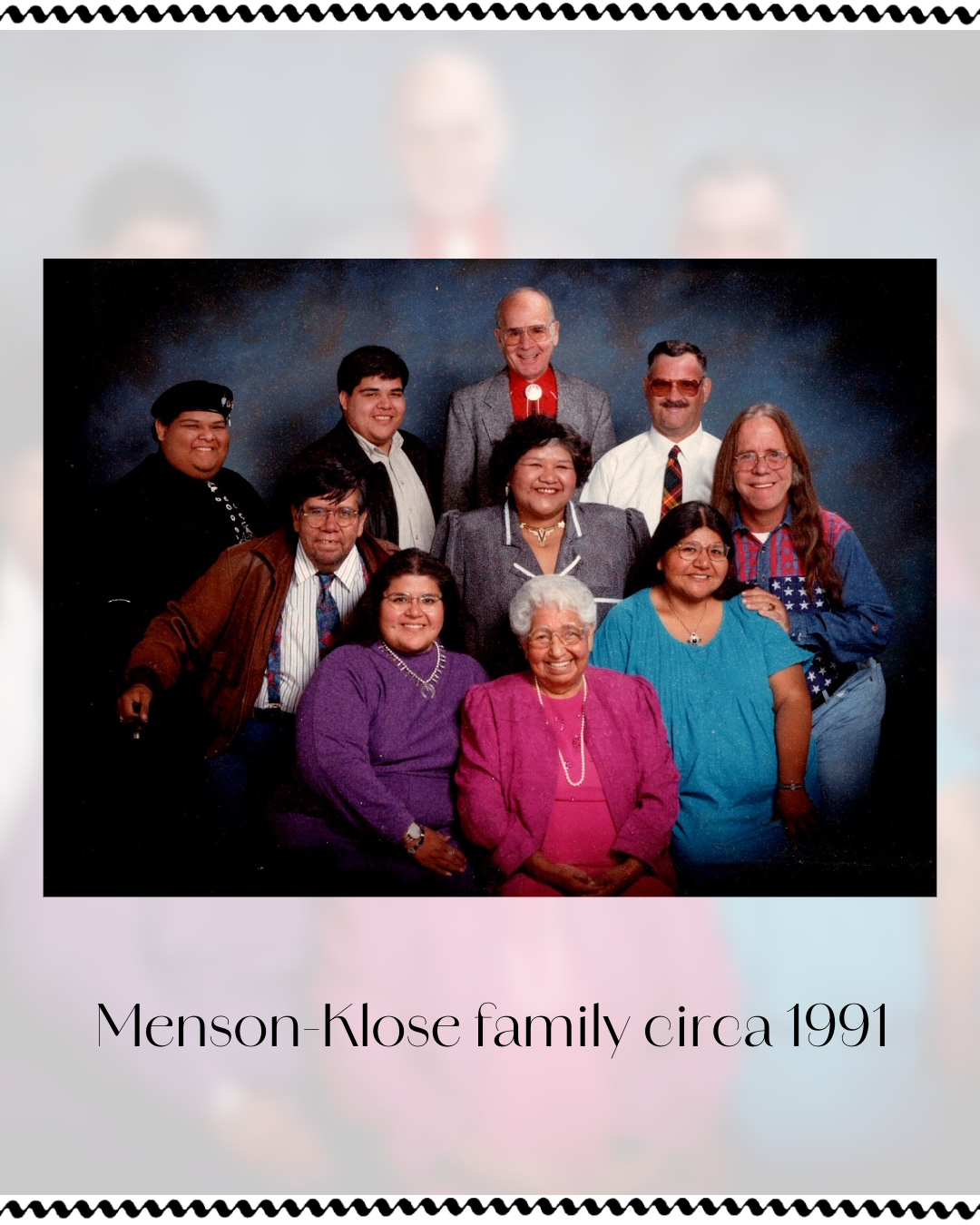
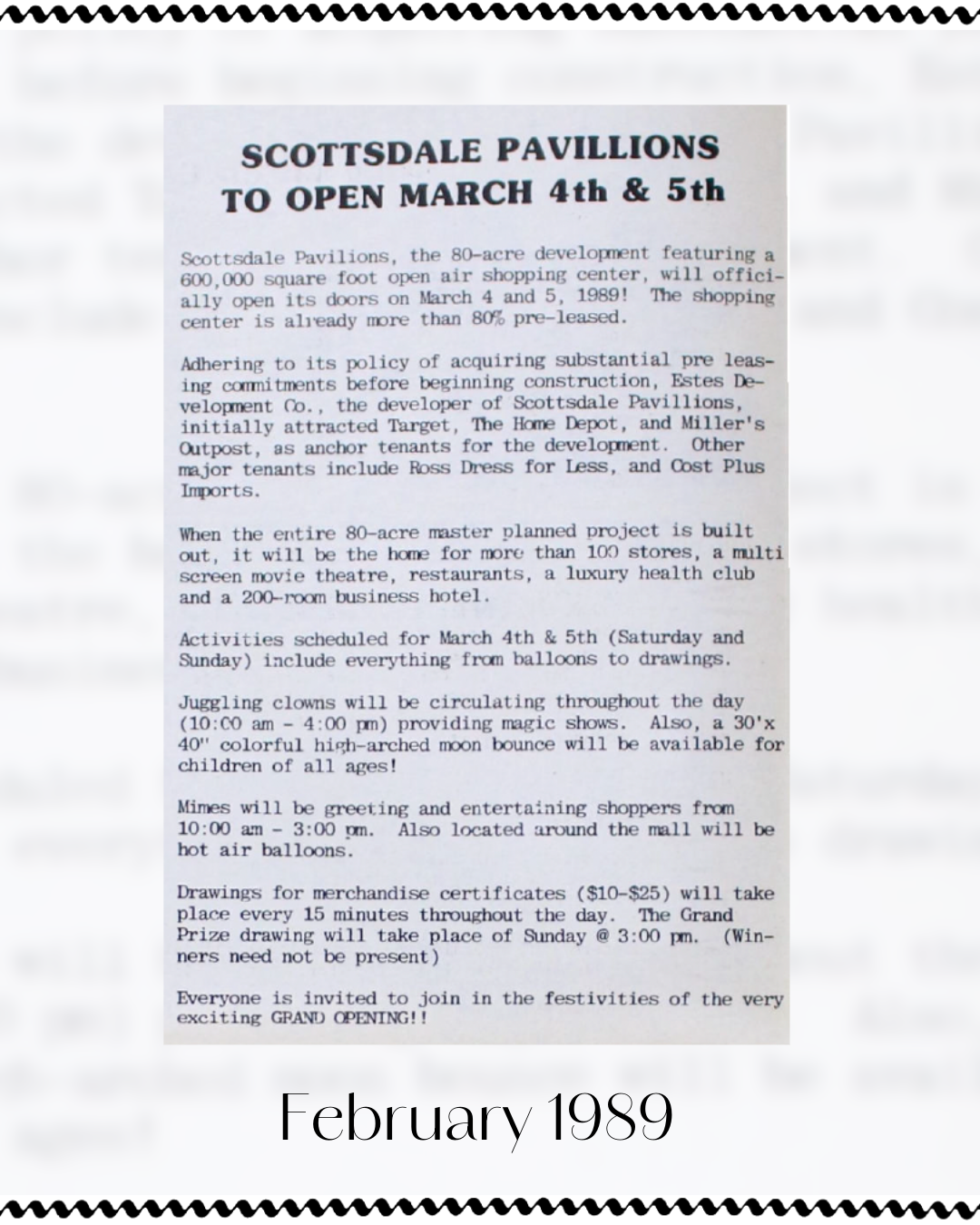
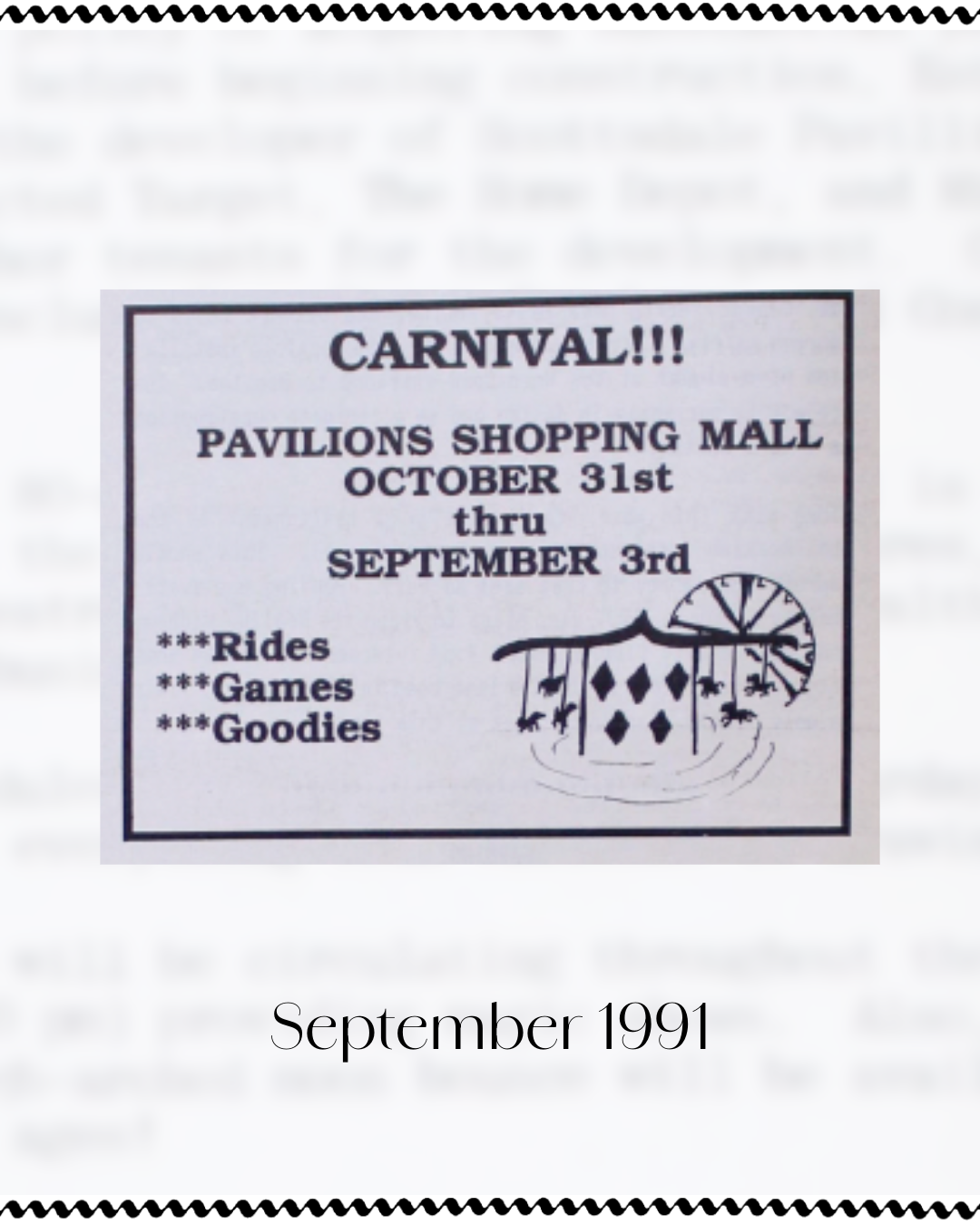
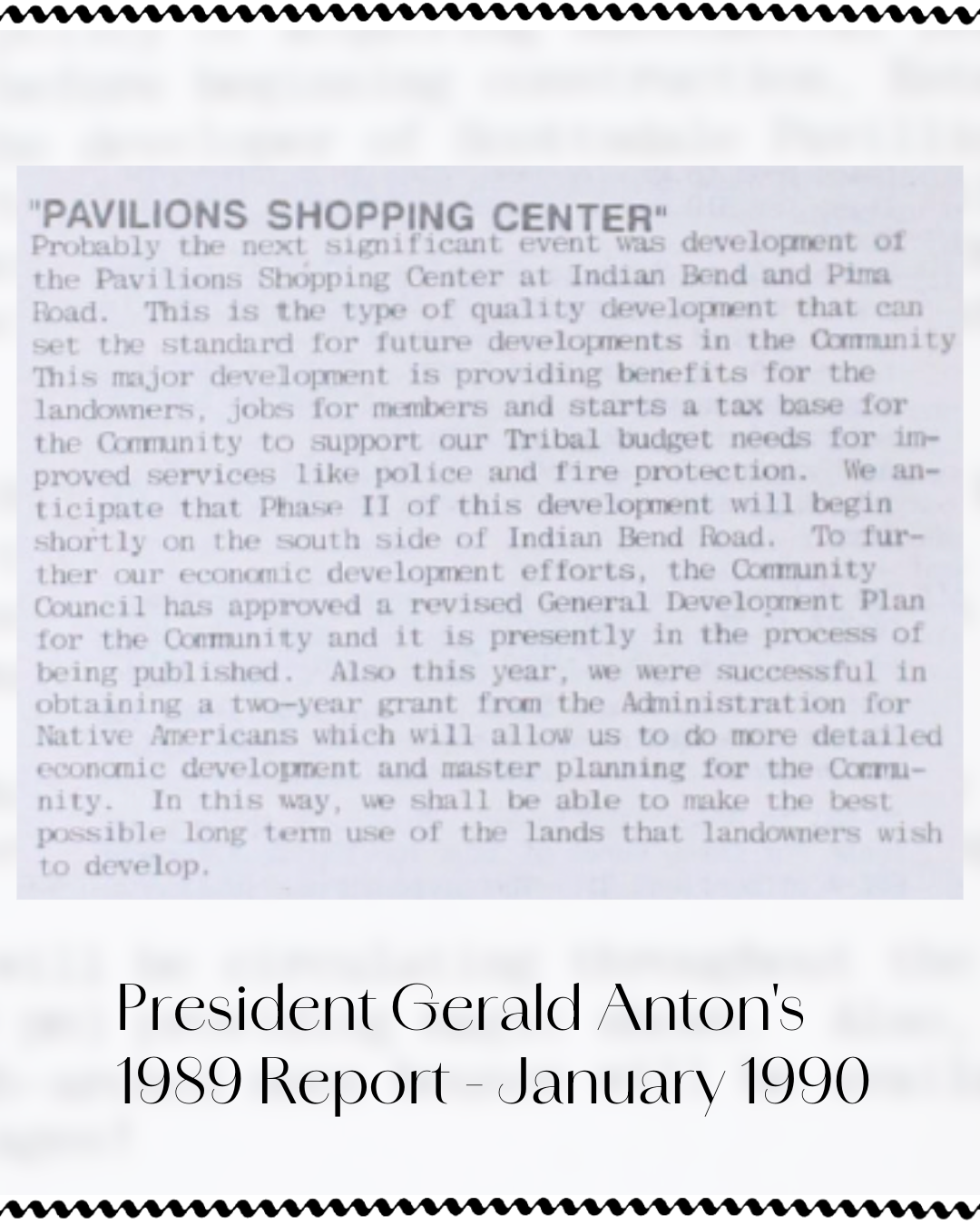
The unitized lease contains land on the north side of Talking Stick Way, as well as the land on the south side.
For the north side, the original lease was created in 1984 and amended and reinstated lease in 1987. For the south side, the lease was created in 1988. Three of the allotments on the south side were formerly a part of Indian Trails Horse and Country Club. Attorney Ira Levee assigned almost all the lease to the Horlacher family.
Vestar originally conceived the Pavilions as a 400,000 to 600,000 square-foot center, to be developed on the north side of Indian Bend Road, now known as Talking Stick Way on the SRPMIC side of Scottsdale. Based on this concept, the center was designed to resemble a racetrack oval parallel to the road, with a crossroad running through the center. Those roads were finalized when ADOT built Loop 101.
In 2008, Marty De Rito with De Rito Partners Development, Inc. bought the Pavilions from the Horlacher Family for $88 million and announced an investment of $25 million in upgrades. Then, the Global Financial Crisis happened and the Pavilions experienced vacancies.
The Horlachers had a valuable relationship with the landowners and the SRPMIC throughout the development of the lease. De Rito Partners extended this relationship and worked hard to successfully bring the development through the economic downturn, redeveloping the Pavilions into an entertainment destination within the Talking Stick Entertainment District.
The upgrades, which included the draining of man-made lakes for future development, resurfacing parking areas and other repairs, helped to secure the renewal of leases with anchor tenants, Target and Home Depot.
“When we bought the Pavilions, it wasn’t really a good place, and the temptation for many tenants to move was great,” De Rito president Chuck Carlisle said in 2009. “But with us doing all we’ve done to upgrade, then the market turning as it has, the tenants are more willing to stay. They’re seeing we’re backing up our words with actions.”
The Pavilions recovered and thrived as new businesses moved in, and the economy improved.
Since the Pavilions opened, events like the three-day Desert Festival in March 1992, which was sponsored by the Pavilions Merchants Association, attracted non-Community member consumers and SRPMIC members alike. The festival’s Red Mountain Desert Fashion Show was a big hit. It was established for young people to present their cultural heritage and present a sense of pride and confidence in themselves as individuals. The show was directed by Fawn Loring and narrated by Dale Waters. According to an April 1992 O’odham Action News article, the fashion show participants were Vanessa Palmer, Monique Loring, Alena Lopez, Lillian Loring, Tori Pagana, Carlos Dash, Stacey Loring, Sonya Baptisto, Melissa Thomas, Wi-Bwa Grey, Donavan Santo, Theresa Loring, Brandi Enos, Bianca Miller and Mackenzie Greyeyes.
A variety of other events are held throughout the year and on weekends, which includes the popular Rock N’ Roll Car Show and the Native Art Market. For more information about the Pavilions at Talking Stick, head to the official website at https://thepavilionsattalkingstick.com/.
Note: Thank you to the Huhugam Ki: Museum and the Cultural Resources Repository in searching for important information for this article. We look forward to their future plans of providing accessibility of certain archived materials for Community members and Tribal departments.

